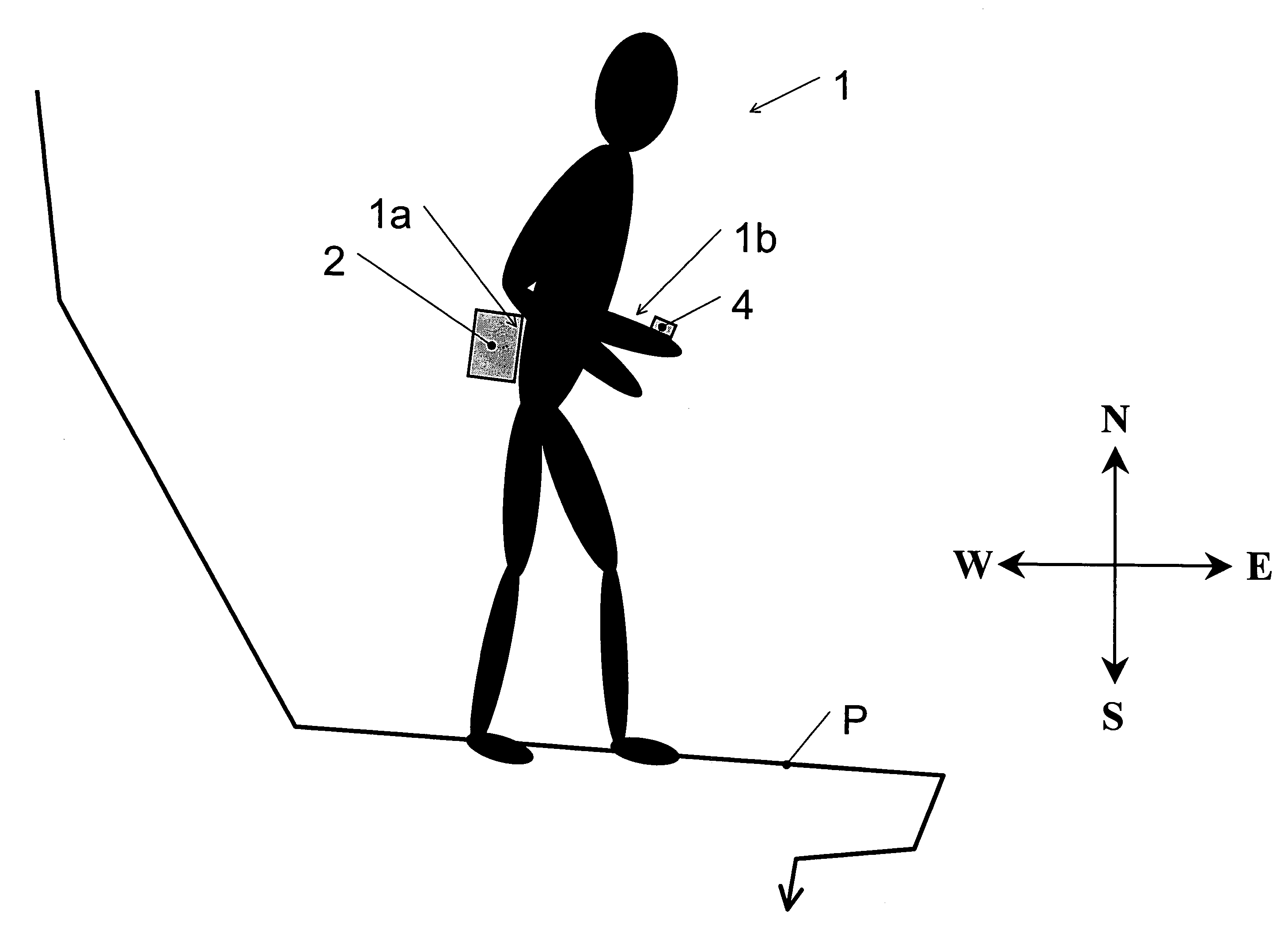Method, apparatus and computer program for azimuth determination e.g. for autonomous navigation applications
a technology of autonomous navigation and computer program, applied in the field of azimuth determination, can solve the problems of affecting the accuracy of azimuth, and prone to poor or impossible reception conditions for observers,
- Summary
- Abstract
- Description
- Claims
- Application Information
AI Technical Summary
Benefits of technology
Problems solved by technology
Method used
Image
Examples
first embodiment
of Algorithm
[0221]For each window, there is computed a linear regression on the gyroscope and compass azimuths considering time on the x axis (abscissa).
These are given respectively by:
For the compass=Acomp*Time+Bcomp,[0222]with S0comp: standard deviation of the model for the compass data, and
For the gyroscope=Agyro*Time+Bgyro,
[0223]where:
[0224]S0gyro is the standard deviation of the model for the gyroscope data,
[0225]Acomp is the slope of the linear regression of the azimuth using the compass data,
[0226]Bcomp is the offset or the constant of the linear regression of the azimuth using the compass data,
[0227]Agyro is the slope of the linear regression of the azimuth using the gyroscope data,
[0228]Bgyro is the offset or constant of the linear regression of the azimuth using the gyroscope data.
[0229]The aforementioned standard deviation quantities SOcomp and SOgyro can be understood as follows, where the standard deviation is determined as:
[0230]SOx=sqrt (Σ(xi−xmodel)2 / (N−1), where xi ...
second embodiment
of Algorithm
[0249]For each window, there is computed:[0250]a linear regression on the gyroscope and compass azimuths, considering time on the x axis, and
[0251]the standard deviations of the compass data and of the gyroscope data.
[0252]This gives the following conditions:
Compass=Acomp*Time+Bcomp,[0253]S0comp normal standard deviation
Gyroscope=Agyro*Time+Bgyro [0254]with S0gyro: standard deviation of the model
[0255]The parameters determining the geometry of the azimuth are:
[0256]Acompcomp
[0257]S0compcomp
[0258]S0gyrogyro,
[0259]where the three last thresholds are adapted dynamically as a function of the time elapsed from the last gyroscope update.
[0260]Environmental Cases
[0261]The following is applicable to both the first and second embodiments of the algorithm discussed above.
[0262]The interest is to define if the area containing the observer is magnetically disturbed or not.
[0263]Magnetic disturbances are identified in the following way:
[0264]If S0comp / S0gyro>threshold_SO then the o...
example 1
[0277]The algorithm of the azimuth and position computation process according to the first example is conducted in the following ten steps.
[0278]1. Compute the azimuth “i” from: i) the gyroscope, ii) the compass and iii) the combined solution in parallel (three different solutions). This results in navigation in 3 different real-time positions.
[0279]Obtain n samples of azimuth values “i”.
[0280]2. For the n samples, apply the case modeling discrimination on the window. This yields the following information: displacement along a straight line, displacement along a curve, magnetically disturbed or stable environment situation.
[0281]3. Combine the environmental and geometrical case to identify the window pattern and to produce some preliminary conclusions. For example, if the observer moves along a straight line in a disturbed environment, this would call for reliance on the gyroscope only.
[0282]4. Check the previous window pattern for continuity. For example, if the previous and actual...
PUM
 Login to View More
Login to View More Abstract
Description
Claims
Application Information
 Login to View More
Login to View More - R&D
- Intellectual Property
- Life Sciences
- Materials
- Tech Scout
- Unparalleled Data Quality
- Higher Quality Content
- 60% Fewer Hallucinations
Browse by: Latest US Patents, China's latest patents, Technical Efficacy Thesaurus, Application Domain, Technology Topic, Popular Technical Reports.
© 2025 PatSnap. All rights reserved.Legal|Privacy policy|Modern Slavery Act Transparency Statement|Sitemap|About US| Contact US: help@patsnap.com



